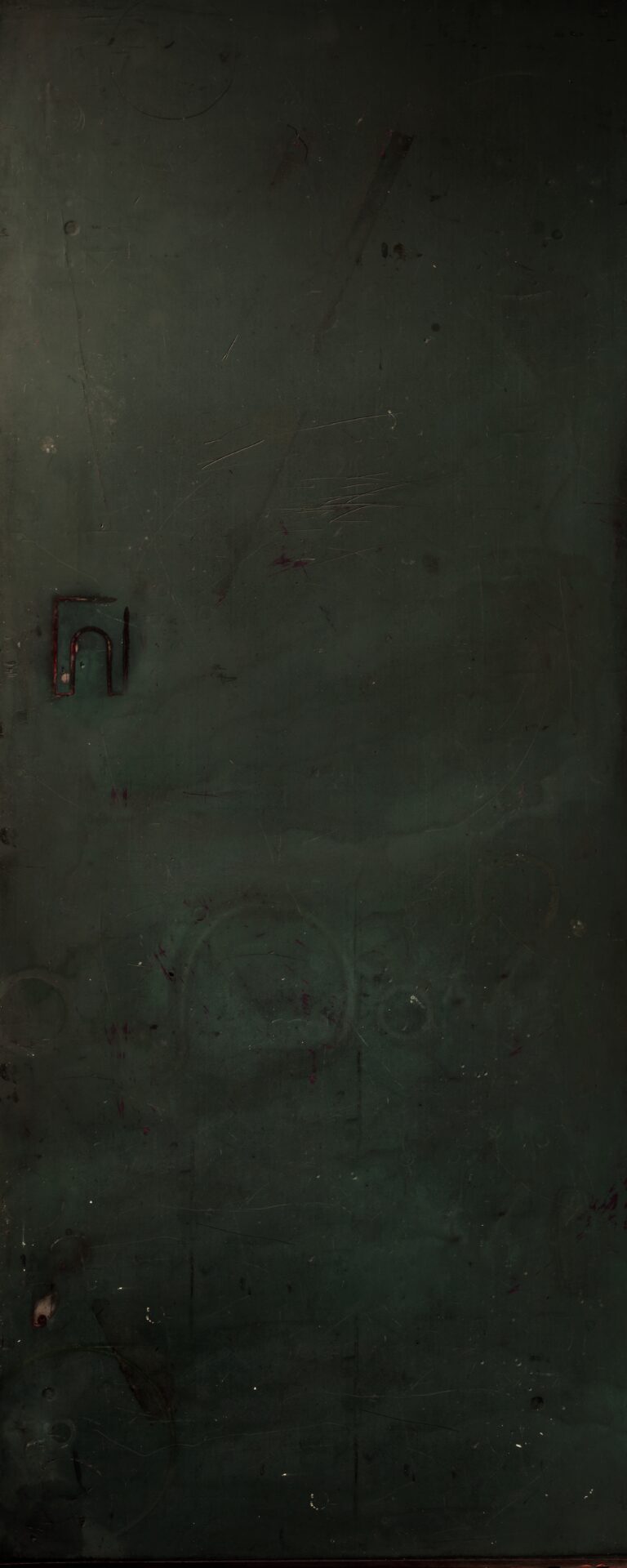Epigraphs in The Ink Black Heart
All of the Robert Galbraith novels chronicling the investigations of Cormoran Strike and Robin Ellacott make extensive use of epigraphs. Sometimes the quotations in a novel come from a single work as in Lethal White, where they are all from Rosmersholm by Henrik Ibsen, or The Running Grave where they come from the I Ching, or Book of Changes. (You can read more about them here.) In Career of Evil the epigraphs come from song lyrics of Leda Strike’s favourite group, The Blue Öyster Cult, and in The Silkworm, they are chosen from a range of 17th century plays.
In The Ink Black Heart, the epigraphs all come from 19th century works, and apart from the parts, the prologue and coda, are all drawn from the work of female poets of that century. Some are still well-known today, like Charlotte Brontë, author of Jane Eyre, while others are almost forgotten. As well as being female creatives like Edie Ledwell, whose death is at the centre of the investigation, some of these poets also faced attacks on their character and many died young, also like Edie. A couple are even buried in Highgate Cemetery the splendid gothic Victorian cemetery in north London where Edie found her inspiration, her death, and her final resting place. As Robert Galbraith says here, discussing the epigraphs, it’s a massively important location in the book.
So, let’s take a look at some of the epigraphs, their authors, and the moments they reflect on in the unfolding investigation.

Henry Gray
Prologue
Wounds of the heart are often fatal,
but not necessarily so.
– Henry Gray, FRS, Gray’s Anatomy
For a minute sliver of time everything around them blurred, as though they stood in the eye of some slow-motion tornado of purring cars and passing lights, of pedestrians and cloud-dappled sky, and only the feel and smell of each other was real…
The Ink Black Heart, Robert Galbraith
Strike and Robin celebrate her thirtieth birthday with drinks at the Ritz after the successful conclusion of the investigation into the disappearance of Margot Bamborough (Troubled Blood), but a moment of misunderstanding at the end of the evening leaves them both wounded and confused about their feelings for each other, so dissecting affairs of the heart is very much at the centre of the novel.
And hearts are at the centre of their new case too. The cartoon created by business and former romantic partners Edie Ledwell and Josh Blay, is called The Ink Black Heart and stars a disembodied heart, Harty, black because of the evil done by his owner and now trying to be good. It is set in Highgate Cemetery, and it was here that Edie Ledwell and Josh Blay dreamed up and set their hit cartoon, and the place where they were attacked, after Edie came to Strike and Robin for help, leaving Edie dead and Josh severely wounded.
No wonder the selections from Gray’s Anatomy work on so many levels, as Robert Galbraith says. This famous medical textbook by Henry Gray, filled with detailed drawings of the human body, organs, muscles and bones, was first published in 1858, and is still in print. Gray is buried in Highgate Cemetery and is the only man whose work is used in the epigraphs of the novel.
Felicia Hemans
Chapter 6
Thou shalt have fame! – Oh, mockery! give the reed
From storms a shelter – give the drooping vine
Something round which its tendrils may entwine –
Give the parch’d flower a rain-drop, and the meed
Of love’s kind words to woman! Worthless fame!
– Felicia Hemans Properzia Rossi
And the fandom believes all of it, and they attack me for stuff I’ve never done, never said, things I don’t believe.
The Ink Black Heart, Robert Galbraith
Felicia Hemans was born in 1793 and died in 1835, two years before Victoria become Queen of England and four years before Highgate Cemetery was opened. She was incredibly popular during her lifetime both in America and the UK, as well as being a huge influence on many of the poets who came after her. Some of Hemans lines are still famous, even if she herself is forgotten now, such as ‘The Stately Homes of England, How beautiful they stand,’ and ‘The boy stood on the burning deck’.
Hemans often wrote about the difficulties women faced choosing between, or being forced into, domesticity or an outlaw existence and the dark choices they had to make to exert any sort of control over their destinies.
This epigraph to chapter 6 is from a poem of Hemans’ about sixteenth-century Bologna sculptress Properzia Rossi. Rossi too was well-known in her time but lived a troubled existence.
In early January artist Edie Ledwell appears in Denmark Street and is scruffy, even grubby enough for Pat to ask Robin if she is free to visit Gateshead. The code means, in essence ‘I’ve got a nutter in here’. Flattering attention from the press has meant the agency too has encountered problems with their growing fame as unusual and disturbed clients walk in off the street.
Edie is being harassed online by a troll going by the name of ‘Anomie’ who has co-created an online fan site ‘Drek’s Game’, and seems to know details about her health, finances, and sex life. Anomie is using that knowledge to taunt and bully Edie and turn fans of the cartoon against her. The campaign has been successful, even subcontractor Midge’s ex-girlfriend, who was obsessed with the cartoon, came to loathe Edie. Someone has told Edie’s co-creator and ex-boyfriend Josh she might be Anomie, harassing herself for sympathy. Edie is desperate to prove to him how ridiculous that is. Fame, as Hemans’ speaker proclaims, gives no protection to the artist. Robin and Strike do not have computer specialists on staff though and are already fully booked with work, so are forced to turn her away.
Elizabeth Barret Browning
Chapter 26
And I walked as if apart
From myself, when I could stand,
And I pitied my own heart,
As if I held it in my hand…
– Elizabeth Barrett Browning Bertha in the Lane
She’d been kidding herself for too long. This wasn’t friendship or mere fondness: you didn’t feel as though all your intestines had been seared with dry ice when you found out your friend was sleeping with someone new. But what a brutal way to be forced into facing the truth.
The Ink Black Heart, Robert Galbraith
Elizabeth Barrett Browning, like Christina Rossetti, wrote a poem to honour Letitia Elizabeth Landon and is quoted in The Ink Black Heart almost as often as Rossetti. Famous for her romance and marriage with fellow poet Robert Browning, she was a star in her time and is still known today for her Sonnets from the Portuguese, the most famous of which begins ‘How do I love thee, let me count the ways.’ Most of the quotations used in Ink Black Heart come from her novel in verse, Aurora Leigh, which tells the story of a self-educated young woman struggling to write while dealing with the expectations and sexual mores of her time.
This quotation comes just as Robin has learned, from Charlotte, that Strike has a girlfriend. She walks through Soho feeling, just like the speaker of Barrett-Browning’s poem, a strange out of body sensation, realising she has been fooling herself about suppressing her feelings for Strike. Then Ryan Murphy calls and asks her out, and she, at first totally misunderstands. Later, in the aftermath of the bombing of the office, he’ll ask again, and this time, a bit more confident in herself after her encounter with Pez and thinking of the accomplished and beautiful Madeline who Strike is seeing, she says yes.
Christina Rossetti
Chapter 52
I deck myself with silks and jewelry,
I plume myself like any mated dove;
They praise my rustling show, and never see
My heart is breaking for a little love…
– Christina Rossetti L.E.L
Madeline, who was wearing a fitted dress of purple silk, with a heavy amethyst necklace and vertiginous heels, stood stock still on the pavement, arms folded, half her face in shadow, half brightly illuminated by the light still shining out of the shop window.
The Ink Black Heart, Robert Galbraith
Christina Rossetti was a popular poet from the publication of her first collection in 1862 to her death in 1893 and is quoted more often than any other writer in The Ink Black Heart. She might already be familiar to fans of Strike and Robin – one of her poems, A Dirge, includes the line ‘You should have come to the cuckoo’s calling’.Rossetti is also one of the poets quoted who is buried in Highgate Cemetery. The tour Robin takes (as art student Jessica Robins) heads off to visit her family tomb, but Robin goes for a drink with Pez Pierce instead. He was the original voice of ‘Magspie’ in The Ink Black Heart and is still an active member of the North Grove Art Collective where Josh and Eddie met. On the way, he tells her how Christina’s brother and collaborator, the artist and writer Dante Gabriel, buried a unique volume of his poetry in the family plot with the body of his first wife, Lizzie Siddal. Siddal was a model, artist and poet who died young, likely by suicide, and it’s possible A Dirge was written for or about her. Seven years later, Dante’s poems were retrieved from her tomb for publication with, Pez says, wormholes through the pages.
In chapter 52 Madeline Courson-Miles, the successful jewellery designer Strike has been seeing since the New Year, is angry and upset that Strike has come to the launch of her latest collection only once the press has left. This leads to a bitter row. Like many of the women Strike has been involved with, Madeline wants a lot more from Strike than he is willing to offer and as the epigraph suggests her heart is breaking for a little love from him, even while she is celebrating the opening in her finery. Charlotte Ross, Strike’s ex-fiancée who is modelling for the new collection, has been sweetly pouring poison into Madeline’s ear too about Strike and his former lovers. Madeline ends up apologetic and in tears, but Strike hates the drama. He dealt with Charlotte’s jealousy and fits of rage for a long time because he loved her in spite of it all. Without love, the behaviour holds no appeal for him whatsoever. Madeline tries to make it up to him, but when Strike chooses to stay on Robin’s sofa rather than with her after the bomb attack on the office, it’s clear the relationship is failing. Madeline does not take the breakup well.
Adah Isaacs Menken
Chapter 57
Slouch back to your haunts of crime.
The Ink Black Heart, Robert Galbraith
Ye do not know me, neither do ye see me.
Adah Isaacs Menken, Judith
LordDrek: I will sfauking hunt you dowbn and ksill you
Adah Isaacs Menken was an American actress, painter and poet who died in 1868 in Paris at only thirty-three. At least we think she was thirty-three; her birthdate as well as her background is uncertain as she told various versions of the story. Her short, sensational life involved numerous marriages and affairs, a successful and scandalous stage career, and friendship with the controversial poet Walt Whitman. Charles Dickens was also an admirer. When very ill, she wrote that perhaps it was fair she was dying young, having tasted more of life than many women who lived to a hundred. Though many dismissed her writing, Christina Rossetti was an admirer.
In chapter 57 Anomie taunts LordDrek, certain that his identity will remain a secret, even though LordDrek, and that of his brother who Robin has just saved from certain death, is bound to be revealed. Though a confrontation with Anomie will come in the end, discovering his or her identity proves almost impossible. Clever, vicious, and half-mad, the troll is a constant presence online and a ghost in the real world.
Letitia Elizabeth Landon
Chapter 68
The jealous doubt, the burning pain,
That rack the lover’s heart and brain;
The fear that will not own it fear,
The hope that cannot disappear…
– Letitia Elizabeth Landon, The Troubadour, Canto 2
He’d never heard Robin talk like that, never imagined she could flirt that well. He’d thought… what? That she was some innocent schoolgirl?
The Ink Black Heart, Robert Galbraith
Letitia Elizabeth Landon, known by her initials L.E.L. was another poet who was famous in her time, but is overlooked now. Indeed, Christina Rossetti’s poem quoted in the epigraph in chapter 65 was written in her memory. She wrote to support her family after the death of her father, but rumours in the gutter press about her private life made her a controversial figure and while her poetry is often sentimental, her novels show her wit and satirical bent. Sounding very like a Victorian Edie, she wrote to her sister: ‘I think of the treatment I have received until my very soul writhes under the powerlessness of its anger.’ She died young while with her husband in West Africa and many sensational stories were told about her death. Later critics, reacting against Victorian sentimentality, also ignored her work. Though she and her friends always insisted she was innocent of the slanders told of her before she died, it seems that she did, in fact, have three children with a married man before she went on to be married.
In Chapter 68 Strike listens to the tape of Robin, posing as Jessica, having a drink with Pez Pierce. Listening to her flirt and wondering what is happening in the gaps between their words, Strike is aggrieved and unsettled, though he knows he has no cause for complaint. He’s seeing Madeline after all. Nevertheless, hearing Robin in this context makes him deeply unhappy, and it will lead to Strike making clumsy attempts to find out how much she enjoyed her drink with Pez, which irritates his partner.
Helen Jackson / Helen Hunt Jackson / Helen Murphy Hunt
Chapter 87
Great loves, to the last, have pulses red;
All great loves that have ever died dropped dead.
– Helen Hunt Jackson Dropped Dead
It wasn’t that he saw the truth of Charlotte in that instant, because he’d come to believe that there was no single, static truth about any human being, but he understood, once and for all, that something he’d taken to be true wasn’t.
The Ink Black Heart, Robert Galbraith
Helen Hunt Jackson was an American poet and novelist, and a friend and contemporary of Emily Dickinson whose work also is featured in the epigraphs of The Ink Black Heart. A campaigner for the rights of Native Americans, she was famous in her day and her novel Ramona, has never been out of print.
When Strike meets Jago Ross and makes it clear what the consequences will be if he involves Strike in his divorce from Charlotte, Charlotte herself is there and follows Strike into the street, convinced she can persuade him to have a drink with her. In their conversation though, Strike discovers a shocking truth about his former fiancée, and it is clear their great love, an affair which lasted on and off for sixteen years, is absolutely over.
Mary Elizabeth Coleridge
Chapter 106
Bid me defend thee!
Thy danger over-human strength shall lend me,
A hand of iron and a heart of steel,
To strike, to wound, to slay, and not to feel.
– Mary Elizabeth Coleridge Affection
The rape alarm continued to wail from the sitting room as she passed the open door, flying towards where Strike was slumped against the wall beside the open front door, a hand pressed to his upper chest, smears of blood on the wall behind him.
‘Oh God, Strike—’
The Ink Black Heart, Robert Galbraith
Mary Elizabeth Coleridge, teacher, novelist and poet, was the daughter of the great-nephew of Samuel Taylor Coleridge and grew up in a sheltered artistic and musical household. She learned Greek in her twenties, and travelled in Italy, but died before she was fifty of acute appendicitis in 1907. Some of her poems are brief lyrics, full of a sense of place, but others such as Insincere Wish Addressed to a Beggar, which supplies the epigraphs for chapters 79 and 81, give ironical commentary on society.
The search for Anomie comes to a violent conclusion when Robin rushes into danger, refusing to wait for the police. Strike follows her in spite of the pain he is in and his near incapacity, caused by the strain the last few weeks and his own actions have put on his stump. Whatever his condition though, he is ready to meet Anomie in the darkness to save his partner relying on the ‘over-human’ strength his feelings for Robin give him.
All of the poets featured in The Ink Black Heart – there are more than twenty of them – are fascinating figures in their own right. You’ll find a partnership, a composer, a philosopher and a philanthropist among the ones we haven’t even mentioned yet – and their verse – passionate, dark and wise – haunts the story of the investigation. Their voices, full of high Victorian romance, are whispering from among the elaborate tombs and memorials of Highgate Cemetery – as Robert Galbraith says, a place of both beauty and mourning – where Edie’s creative journey flowered and faded.




